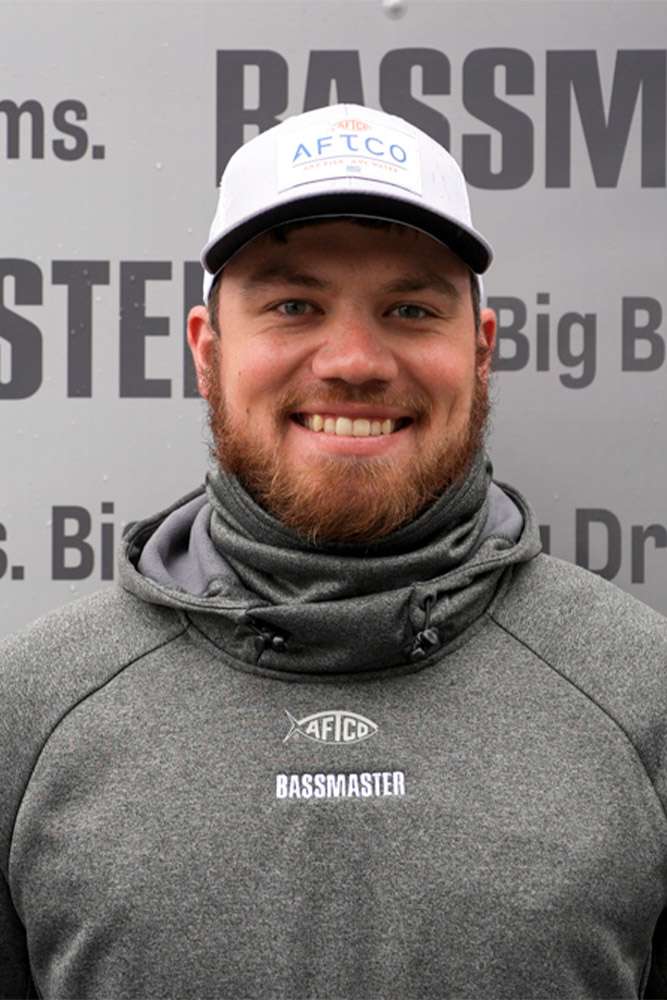
Often at the outset of an Elite Series tournament, the question anglers often consider is, ‘How well can I manage my bass?’ This week at the AFTCO Bassmaster Elite at Lake St. Clair, that question changes slightly to, “Is it even possible to manage fish?”
The general consensus seems to be you can’t manage them, at least not very well in this event.
A couple of factors are at play. For one, the bass on St. Clair move a lot, and there is no guarantee they will be in the same spot the next day or the day after that. The flats on the lake stretch for miles and Joey Cifuentes III knows it is difficult to cover it all, even in a four-day span.
“I’m going to catch all I can catch,” Cifuentes said after landing 22 pounds, 9 ounces on Day 1. “It is a vast area and my bites are far from each other. There are just fish here and there, so I am going to catch all I can catch.”
“They are always moving,” Cooper Gallant added after landing in fourth with 22-14. “You have to re-find them every day. I knew I was around them, I just had to relocate them. The same thing is going to happen on (Day 2). I’m going to have to find them again. They are roaming.”
The weights are also incredibly tight, with 33 bags of smallmouth over 20 pounds hitting the scales on Day 1. Shane LeHew is in the lead with 24-3 while David Mullins is sitting at the cutline with 19-2.
Pass up on one bass and an angler may find themselves on the outside looking in for Semifinal Saturday.
And while anglers can cover more water than ever on St. Clair, with Lake Erie and Lake Huron in play, many have elected to share parts of some of the vast flats the fishery has to offer. While they can easily fish what is in front of them for the most part, having multiple boats in an area makes expanding on those areas much more difficult.
“You just have to hope there is enough there,” LeHew said. “Typically someone who wins here wins in a general area and they fish it for four days.”
Keeping an Eye on the Grass
With little to no other cover in the water, the various grasses in St. Clair attract bait and smallmouth. But this week, it doesn’t seem like smallies that are catchable are in the grass, rather next to it or nearby.
Bryan Schmitt (23-3) and Joey Cifuentes III (22-10) targeted cabbage patches to land their Top 5 bags of brown fish on Day 1.
“There are a lot of weeds in my area and the smallies are getting on clean spots. Like hard bottom clean spots,” Gallant said. “There need to be weeds close by. They are mainly around the sand and the cleaner bottom.”
Brandon Lester has noticed the isolated clumps of grass in his Day 1 area, which produced 22-9, attracted smallmouth to some extent.
“There are isolated clumps of grass out there and they are relating to that a little bit, but it isn’t where they live,” Lester said. “They are just around them. You need to be around a grass line or isolate clumps and there will be fish somewhere close by.”
Anglers have been able to zone in on a general depth range. Some are targeting the 11-13 feet of water range while others are closer to 17 feet of water.
Mixed in
This week, it seems like the smallmouth on Lake St. Clair aren’t divided into weight classes. Instead, many of the pros are having to weed through numbers of fish to get to the 4 and 5-pounders.
LeHew separated himself by finding singles in slightly deeper water, but others are catching 30, 40, and even 50 bass a day to get to their final tallies.
“They are all mixed in. But there was one little section where it seemed like the better ones were,” 6th-place Brandon Card said.
Lester caught 50 bass on the way to his Top 10 showing on Day 1. The majority of his better bass have been mixed in with smaller ones, with no real distinction between when he would get one of those quality bites.
Weather watch
Day 1 on St. Clair features considerable cloudiness most of the morning after a line of storms moved through the area overnight. That made for a tougher bite for the Elite anglers until about mid-morning when the clouds began to part.
“The clouds made it a little tougher for me,” Cifuentes said. “When it got lighter is when I caught my biggest fish.”
But as the afternoon progressed, Schmitt and Card weren’t seeing as many smallies as they hoped.
“When the weather changed, I thought they were going to bite even better with the sun. But I think the pressure change messed them up a little,” Card said.
Mostly sunny skies are expected most of Day 2 before another round of storms moves in for the late afternoon and evening hours, which could mean a more productive morning for many.





